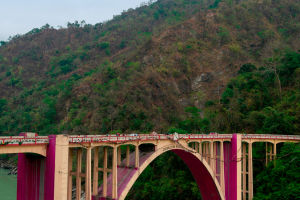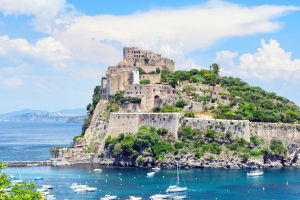Deeg Palace, located near Agra in northern India, is a historic and charming palace.
While it is not as famous as the Taj Mahal, Deeg Palace’s architectural style, historical background, and cultural significance are equally impressive. It is a typical example of Indian palace architecture, blending various artistic styles and witnessing several important historical periods of India.
1. Historical Background
Deeg Palace is located in the Deeg region of Rajasthan and served as the summer residence of the Marwar Kingdom.
The primary purpose of the palace’s construction was to provide a tranquil and comfortable retreat for the royal family, allowing them to escape the intense summer heat. The architectural style of Deeg Palace is deeply influenced by Persian and Indian art, reflecting the Marwar Kingdom's love for art and architecture during that time.
The construction of the Deeg Palace took many years, with successive rulers adding to and restoring the palace. Over time, it grew into the magnificent structure that stands today. Despite the ravages of time, many stunning details of the palace remain, attracting visitors from all over the world.
2. Architectural Style and Features
The palace’s walls and arches are adorned with intricate carvings that depict mythological tales, historical events, and natural landscapes.
Every room, corridor, and courtyard is filled with unique decorative arts, showcasing the splendor and luxury of Indian royal architecture. Notably, in the main halls of Deeg Palace, one can admire a series of exquisite reliefs that vividly recreate the daily life and cultural atmosphere of the royal era.
3. Main Attractions
Deeg Palace consists of several courtyards, gardens, rooms, and buildings, each with its distinct style and purpose. Some of the most famous parts include:
1. Royal Bath: The royal bath is one of the highlights of Deeg Palace. This bath was not only a place for the royal family to bathe but also served as a venue for socializing and entertainment. The design of the bath is remarkable, with intricate sculptures and reliefs decorating the pool's surroundings, creating a luxurious atmosphere.
2. Halls and Banquet Rooms: The halls and banquet rooms of the palace were used for royal ceremonies and important events. The walls and ceilings are adorned with stunning murals depicting the grandeur and opulence of the royal family.
3. Gardens: Deeg Palace is surrounded by vast and beautiful gardens, home to a wide variety of flowers and plants. These gardens provided a perfect space for the royal family to relax, offering both peaceful settings and vibrant colors. Especially during spring, the blooming flowers create a visual feast for visitors.
4. Cultural Significance and Influence
Deeg Palace is not just a palace; it is an important symbol of Indian history and culture. It has witnessed the transformation of India through several critical historical periods, particularly during the Marwar dynasty, when it served as the political and cultural center of the kingdom.
The architectural style and decorative art found in the palace deeply influenced other palaces and buildings in India, becoming a model of architectural design in that era.
5. Tourism and Preservation
Today, Deeg Palace is one of India’s renowned tourist attractions. Visitors come to admire the magnificent palace architecture and experience its unique art and cultural atmosphere.
However, as time passes and the number of visitors increases, Deeg Palace faces challenges in preservation and maintenance. To ensure that the palace’s historical and cultural heritage is protected, the Indian government and related departments have implemented a series of measures. These include limiting the number of visitors, strengthening the restoration of the buildings, and promoting awareness of cultural heritage preservation.
Deeg Palace is a palace filled with historical, artistic, and cultural charm. It is not only a treasure of ancient Indian architecture but also a shining gem in the world’s architectural heritage. It offers visitors not just aesthetic enjoyment but also a fascinating collision between history and the spiritual world.


